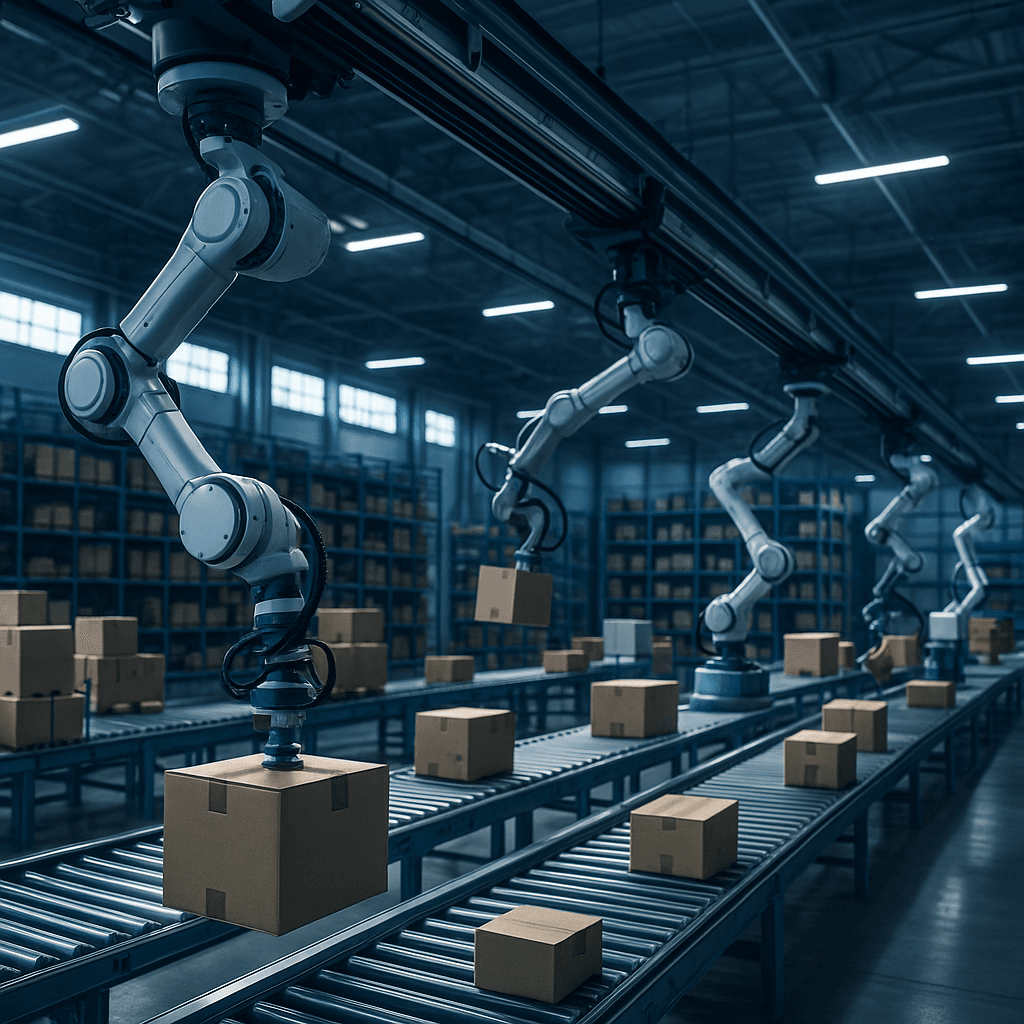Amazon just unveiled Blue Jay, a suspended robotic system that can pick, sort, and consolidate warehouse items simultaneously - handling roughly 75% of everything the company stores. The multi-armed robot is already operating in a South Carolina facility, marking another leap in Amazon's push to automate its massive fulfillment network.
Amazon is reshaping warehouse work again. The company's latest Blue Jay robotic system represents a significant leap from single-purpose automation to true multi-tasking machinery that could fundamentally change how fulfillment centers operate.
The Blue Jay system features multiple robotic arms suspended from ceiling-mounted conveyor tracks, each equipped with suction-cup grippers that adapt to items of varying shapes and sizes. What makes this deployment noteworthy isn't just the technology - it's the consolidation. Blue Jay combines what previously required three separate robotic stations into one streamlined workplace that can pick, sort, and consolidate simultaneously, according to Amazon's announcement.
The timing couldn't be more significant. The New York Times just published an investigation revealing that Amazon's automation team expects to avoid hiring more than 160,000 people in the U.S. by 2027, potentially saving about 30 cents on every item the company packs and delivers. The report, based on internal strategy documents, puts Blue Jay's debut in stark context.
"The materials appear to reflect the perspective of just one team and don't represent our overall hiring strategy," an Amazon spokesperson told CNBC in response to the Times investigation. But the company's actions speak differently - Blue Jay joins an expanding fleet that includes Vulcan, the touch-sensing robot Amazon introduced in May, and systems capable of removing items from shelves and sorting boxes.
The South Carolina warehouse testing Blue Jay has observed the system handling approximately 75% of items stored across Amazon's sites. That coverage rate suggests Blue Jay could scale rapidly across Amazon's network of fulfillment centers, each processing millions of items daily. The company operates over 1,000 delivery stations and fulfillment centers worldwide.
Amazon's automation push traces back to its $775 million acquisition of Kiva Systems in 2012, which gave the company the foundation for its current robotic fleet. Since then, Amazon has methodically automated different warehouse functions - first moving shelves to workers, then handling specific picking and sorting tasks, and now consolidating multiple operations into single systems like Blue Jay.


